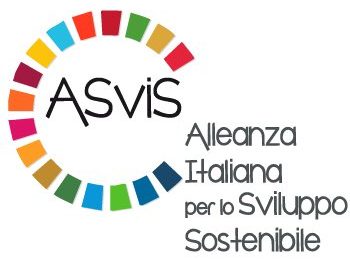
foto da Wikipedia
Renewable energy has always been subsidized because of its low economic market incentives. The costs of renewable energy production are instead higher compared to the low price of energy from conventional energy plants at wholesale markets in terms of €/kWh. Moreover, common arguments in favor of its subsidization are environmental protection and enhancing energy independency. In the recent years, increasing economies of scale in the production together with low capital interest rates have decreased the levelized cost of electricity production, also defined as the price necessary to achieve full recovery of initial capital investments.
Several renewable energy support schemes have been developed and they are reported below. They primary differentiate between fiscal incentives and price-based or volume-based mechanisms. Figure 1 reports the choice of support schemes across European countries. Each support scheme is chosen according to its energy policy objective; its effectiveness (actual renewable production vs latent potential) and its financial support compared to the costs. Moreover, the project might be either technologically neutral (more flexible and cheaper) or technologically specific (with established requirements).
Fiscal incentives include renewable financial subsidies or reduction in the costs of renewable energy production through production or investment tax credits, which often establish technological preferences. While they increase the production capacity of renewables, they do not necessarily increase the actual generation, but they do avoid increasing consumer’s price. Taxing fossil fuels through pigouvian carbon tax is an alternative so to reflect their true costs and scarcity, while indirectly incentivizing renewable production. The Nordic countries have been at the forefront in implementing environmental-oriented taxation; however, a study by Eurostat (2003) found how a large share of the tax burden is shifted to residential consumers.

Figure 1 – The range of approaches in Europe – Source: D. Yogi Goswami, Frank Kreith (2015). Energy Efficiency and Renewable Energy Handbook. The patterned colours represent a combination of instruments. Fiscal incentives not included
The price-based standard feed-in tariff scheme requires the electricity utilities to buy renewable energy at fixed price, normally set above wholesale market price. Renewable energy producers are guaranteed a fixed share of the retail price according to a long-term contract (15 to 20 years), so to cover the levelized cost of production. The advantages are multiple. First, the fixed price system allows producers to capture rents for technological innovation. Second, the long-term contracts decrease the investment risks, promoting financing. Disadvantages are also present. First, the costs of renewable subsidization are passed to residential consumers through electricity tariffs. Second, the long-term contracts might undermine competition. However, as overall the mechanism has been largely successful, often exceeding the national targets.
Volume based schemes differentiate between quota systems and market premium feed-in tariff scheme with auctioning. The quota system or renewable obligations (ROs) implies governments to establish a certain share of renewable sources to be purchased by electricity utilities each year. The ROs in England and Wales were set to 3 percent in 2003, increasing to 15.4 percent in 2016. The renewable energy producers emit “green certificates” for each unit of energy sold to electricity suppliers, with the certificates being tradable so to achieve the government’s target at the lowest costs. The quota mechanism is market-based and competitive, eventually lowering the price. However, it holds relatively high investment risks and low incentives for technological progress. The market premium feed-in tariff scheme with auctioning aims at reaching a certain quantity of renewable production at the lowest cost. The government issues the production permits to the operators asking for the lowest price premium above wholesale market price. While promoting competition, the approach holds high investment costs and risks.
The EU energy policy and the future scenario of low-carbon zero-subsidy energy sector
The primal trilemma of politicians and policymakers in designing energy policies has always been how to guarantee energy sector reliability while assigning the proper weights to the issues of sustainability and affordability in the social welfare function, while not damaging market competition. These issues hold particularly true when considering renewable support schemes, since they might have an impact on electricity retail price and they might undermine competition in the energy markets.
At European level, the promotion of renewable energy production has been subject to reforms and policy changes over the years. By 2020, the EU energy policy objective is to achieve low-carbon zero-subsidy electricity supply. The goal is to make renewable energy production competing with fossil fuels exclusively through the level of the carbon emission price, without the need of any form of direct subsidization.
In 2009 the European Commission released a Renewables Directive (EC, 2009) regarding the promotion of the use of energy from renewable sources (amending and repealing Directives 2001/77/EC and 2003/30/EC), establishing country-specific targets in supporting renewable energy production. However, the Directive failed in addressing the market failure represented by the ineffective carbon price of the EU emission trade system (ETS), since it further lowered the price of emission allowances.
Only in 2015, the European Commission released the Energy Union Package (EC, 2015), also defined as “A Framework Strategy for a Resilient Energy Union with a Forward-Looking Climate Change Policy”. The document proposes principles in supporting the primary policy objective, recognizing that the future zero-subsidy energy sector requires the reform of the EU emission trade system (ETS). Its legislation aims at achieving efficient, credible and durable carbon price through the reform of the ETS. However, setting carbon price is never an easy task because of its sensitivity to price of fossil fuels (primary natural gas), to technological advances and to the political agenda.

Photo © European Commission Audiovisual Service
Furthermore, the 2015 EU Energy Union Package proposes to further integrate renewables in the electricity markets by the shift from the standard feed-in tariff to the market premium feed-in tariff scheme. The policy shift has been surprising since only in 2013 the UK reformed its electricity market replacing its volume-based approaches with a scheme closer to a price-based standard feed-in tariff, with the former volume-based approaches having too high investment risks and costs. Moreover, European case studies agreed on the cost-effectiveness of well-designed standard feed-in tariff schemes, able to reduce investment risks and costs. Then, why did the EU undertook an opposite path of reform? The EU argumentations in promoting market premium feed-in tariff scheme are that linking the contract “premium” price to the wholesale price creates market and efficiency signals for renewable energy producers, which are incentivized to choose the appropriate technology and geographical location, eventually decreasing deployment costs. However, according to the UK Department of Energy & Climate Change (DECC 2011), the objective of low-carbon energy sector has extremely large financial costs (£12 billion per year by 2020 for the UK). Hence, renewable energy producers require financial support to invest in high-capital-cost energy production from low-carbon emission sources. Consequently, any renewable support scheme able to reduce the investment risks and the capital costs would be a manna. That is the primary reason behind the UK choice to shift to a standard feed-in tariff scheme (further integrated by auctioning), which proved to be successful in creating cost savings, decreasing by 3 percent the weight average cost of capital (WACC). Additionally, still in the UK scenario, any reduction in the investment risk by 1 percent would decrease the interest costs of capital by £1.2 billion each year by 2020 (or nearly £45/year per household).
The 2015 Energy Union Package (EC, 2015) also stated the crucial role of financing R&D and less mature technologies in achieving the objective of low-carbon zero-subsidy energy sector. Literature have argued the negative impact of energy market liberalization on the level of investments in R&D (Jamasb & Pollitt, 2015), while others pointed out the danger of overestimating the benefits of scale economies in reducing costs, while underestimating the value of R&D (Jamasb 2007; Nordhaus 2014). For example, Laleman and Albrecht (2014) note that “for each Euro spent on R&D to develop future technologies, 35 to 41 Euros are spent on the deployment of existing technologies”. The 2015 Energy Union Package (EC, 2015) missed to indicate the sources of financing, which are instead identified by the previous 2009 Renewables Directive (EC, 2009). It guarantees an equitable share of financial supports from each EU Member States, with the financial obligations distributed according to the country share of final energy. Since it is hard to efficiently support renewable energy across borders because of variation in the technological costs, Newbery (2016) suggests how distributing financial obligations according to the country GDP share might have been more beneficial in solving the club good problem of financing renewable energy.
Concluding, the promotion of renewables has been changing over time primary according to keep-changing energy market conditions and technological advances. Moreover, country-specific energy policy objectives have a key role in defining the choice of renewable energy support schemes. The different path of reform undertook by the EU and the UK clearly defined a policy trade-off between the investment risks and costs and the level of market competition. By the adoption of market premium feed-in tariff scheme, the EU has clearly supported market competition at the expense of increasing investment risks and costs.
References
- DECC UK, Planning our electric future: a White Paper for secure, affordable and low-carbon electricity. 2011
- Energy Union Package. A Framework Strategy for a Resilient Energy Union with a Forward-Looking Climate Change Policy. Communication from the Commission to the European Parliament, the Council, the European Economic and Social Committee, the Committee of the Regions and the European Investment Bank, COM. 2015 Feb 25;80.
- European Union. Directive 2009/28/EC of the European Parliament and of the Council of 23 April 2009 on the promotion of the use of energy from renewable sources and amending and subsequently repealing Directives 2001/77/EC and 2003/30/EC. Official Journal of the European Union. 2009;5:2009.
- Eurostat, Energy Taxes in the NordicCountries – Does the polluter pay?, 2003.
- Jamasb T. Technical change theory and learning curves: patterns of progress in electricity generation technologies. The Energy Journal. 2007 Jan 1:51-71.
- Jamasb T, Pollitt MG. Why and how to subsidise energy R+ D: Lessons from the collapse and recovery of electricity innovation in the UK. Energy Policy. 2015 Aug 31;83:197-205.
- Palmer K, Burtraw D. Cost-effectiveness of renewable electricity policies. Energy economics. 2005 Nov 30;27(6):873-94.
- Laleman R, Albrecht J., Comparing push and pull measures for PV and wind in Europe. Renewable Energy. 2014 Jan 31;61:33-7.
- Newbery DM., Towards a green energy economy? The EU Energy Union’s transition to a low-carbon zero subsidy electricity system–Lessons from the UK’s Electricity Market Reform. Applied Energy. 2016 Oct 1;179:1321-30.
- Nordhaus WD., The Perils of the Learning Model for Modeling Endogenous Technological Change. Energy Journal. 2014 Jan 1;35(1).








